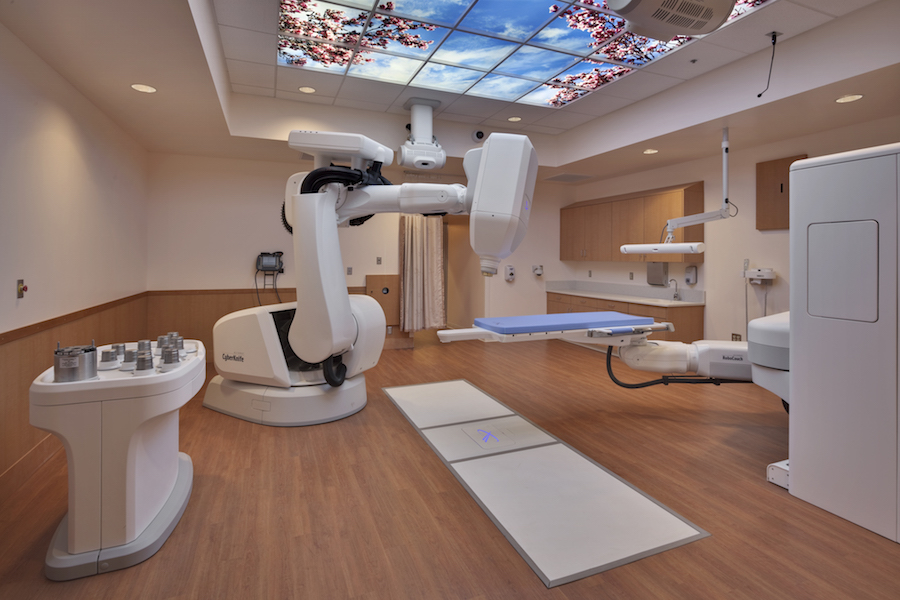An earthquake can have positive side effects. Like in 1994, when, in response to an earthquake that damaged many hospitals in the San Fernando Valley, California issued seismic safety regulations specifically for patient-care facilities. But they were never instituted—until last summer. Now a huge number of California hospitals are being retrofitted or completely replaced, and officials are seizing the opportunity to address sustainability by incorporating some of the most advanced technology available. The result is a petri dish of innovation—and a model for the industry.
1. Plant a garden

Rooftop gardens reduce storm-water runoff and provide better insulation, which can result in an average savings of up to 40 percent on heating and cooling bills. Plus, research shows that green space helps the healing process. University of California–San Francisco Medical Center at Mission Bay features 1.2 acres of green in five rooftop gardens, three of which are accessible to patients.
Where: San Francisco
When: February 2015
From our partners:
2. Turn off the heat—selectively

El Camino Hospital created something of a connected home setup, which integrates room-based sensors, the hospital’s HVAC system, and patient records to control heating and cooling. When a room is empty, the system adjusts to the minimum ventilation settings. When a patient is present, he can choose the temperature through a program on his TV. The program is saving the hospital about $151,000 per year and reducing the surprising number of injuries sustained by patients who leave their beds to change the thermostat.
Where: Mountain View
When: June 2014
3. Replace the floors

Hospitals are the last places that should use even slightly hazardous or carcinogenic materials, so the new Kaiser Permanente Oakland Medical Center installed rubber flooring that can be maintained without harsh industrial cleaners. It has an added advantage of reducing both hospital noise and joint impact. Good news if you just got your knee replaced.
Where: Oakland
When: July 2014
4. Make your own power

Sutter Regional Hospital meets an estimated 70 percent of its energy needs through on-site fuel cells. The solid-oxide cells are stacks of ceramic discs painted with conductive inks. Put oxygen on one side and natural gas on the other and oxygen ions flow between them to produce electricity—clean electricity not from the grid, and thus not derived from coal or hydroelectric power. Which means Sutter reduces its annual contribution to CO2 emissions by nearly 600,000 pounds, and water use by 1.2 million gallons.
Where: Santa Rosa
When: October 2014
5. Stop wasting rain

Lucile Packard Children’s Hospital captures rainwater, condensation from the HVAC system, and any other spare droplets it can, and stores it in a 110,000-gallon underground reservoir. That water isn’t sterile enough for patients, but it can go toward irrigation, lessening the draw on the clean water supply.
Where: Palo Alto
When: December 2016
This feature is adopted from Popular Mechanics














